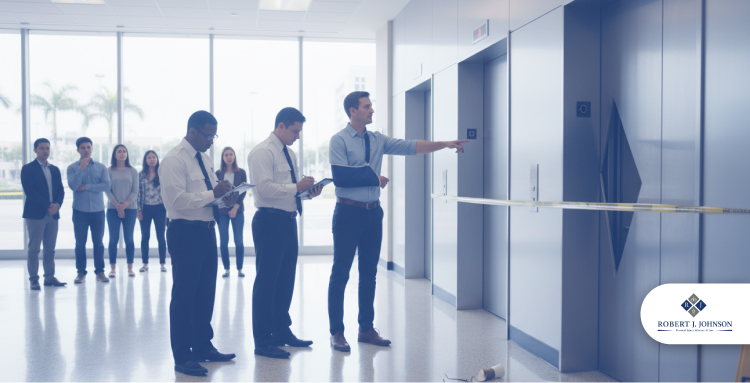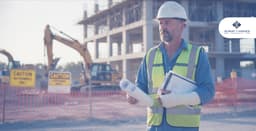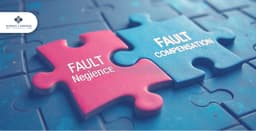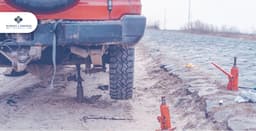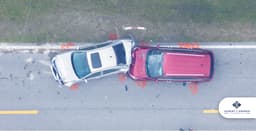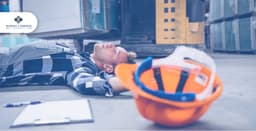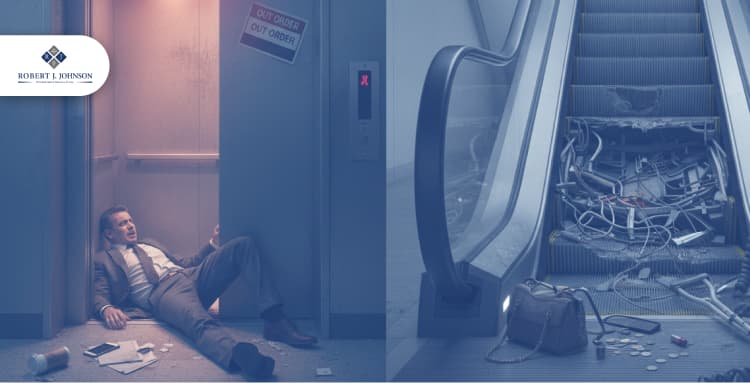
November 15, 2025
Does Florida Law Cover Elevator or Escalator Injuries?
Florida law covers elevator or escalator injury claims; however, these cases often begin the same way, with an ordinary moment turned sudden and violent. A hotel guest steps into an elevator that jerks to a stop between floors. A shopper rides an escalator that shudders, then pitches forward. These are warning signs of what happens when safety laws are ignored.
As a Florida personal injury attorney, I’ve seen how a small mechanical failure can turn an ordinary day upside down. Elevators and escalators are supposed to be safe, carefully checked under state rules, but too often the people meant to maintain them cut corners. What comes next is chaos, pain, and confusion, and most people find themselves facing a complicated web of liability they never saw coming.
1. Florida's Elevator and Escalator Safety Laws
Florida’s Elevator Safety Act, sets the standard for how every escalator and lift must be built, inspected, and maintained. It is not just a technical document, it is the foundation for keeping people safe in public and private buildings across the state.
Every property owner, from high-rise condos to retail complexes, is legally required to ensure that their elevators and escalators are in safe working order.
Each machine must be inspected regularly by a certified elevator inspector, and any defect or safety risk must be corrected before the equipment is cleared for use. Florida law leaves little room for excuses.
The Division of Hotels and Restaurants, which oversees these systems, can even shut down an unsafe elevator until it passes reinspection. Failure to maintain or repair a malfunctioning elevator can expose the property owner to serious legal and financial consequences.
In practice, these inspections are where many injury cases begin. When a maintenance log is incomplete or ignored, it becomes a paper trail of negligence. Over the years, I have seen cases where a missed inspection date or a skipped service call became the deciding factor in proving liability. The law is clear, but enforcement often depends on whether someone is paying attention.
Lift and escalator safety is considered a duty under Florida law. And when that duty is broken, the law steps in. However, the real test comes after the injury, when the question shifts from what failed to who allowed it to happen.
2. Who Is Legally Responsible

Responsibility in an elevator or escalator accident rarely falls on a single person or company. Florida law recognizes that multiple parties often share fault, each tied to how the system was designed, maintained, or operated. When an injury occurs, uncovering that chain of responsibility becomes the heart of the case.
I. Property Owners and Managers
Property owners and managers carry the main legal duty to keep their premises safe. If an elevator stalls, jerks, or drops because of poor maintenance or ignored safety warnings, the owner may be held liable for negligence. The law expects them to take reasonable steps to prevent accidents, not just react after one happens.
In many of my cases, these failures were not sudden or unpredictable. They were the result of years of missed maintenance, forgotten inspections, and warnings buried in service reports. A pattern of neglect, not a single mistake, is often what leads to tragedy.
II. Maintenance Companies
Many buildings rely on third-party contractors to handle inspections and repairs. When these contractors fail to follow proper safety protocols or falsify inspection records, their negligence directly contributes to the injury. A skipped bolt check or a delayed service order can be the difference between a normal ride and a catastrophic fall.
III. Manufacturers or Installers
Sometimes, the problem starts long before the building opens to the public. A design flaw, defective component, or improper installation can cause recurring failures that no amount of maintenance can fix. In those cases, product liability law allows victims to pursue compensation from the manufacturer or distributor responsible for the defective part.
IV. Building Management
When management firms oversee property operations, they share responsibility for ensuring that safety standards are enforced. If they cut corners to save money or overlook inspection schedules, they may face liability alongside the owner.
In Florida, these cases often involve several defendants, each trying to pass blame to the other. Sorting through contracts, inspection reports, and service histories takes time and precision. However, this process reveals how a moment of failure in a mechanical system can expose years of human neglect.
3. What to Do to Prove Your Case
After an elevator or escalator accident, it is not enough to show that something went wrong. Under Florida personal injury law, victims must prove that negligence occurred that someone failed in their duty to keep the equipment safe. Each case unfolds like a chain reaction, built on four key elements that must align for justice to take hold.
Duty of Care
Every property owner, maintenance company, and manufacturer has a legal duty to ensure that lifts and moving staircases are safe for normal use. This duty is not abstract. It is defined by safety codes, inspection schedules, and repair obligations that Florida law enforces.
Breach of Duty
A breach occurs when that duty is ignored, delayed, or mishandled. Skipping inspections, failing to fix known defects, or ignoring prior warnings are common examples of breach. In court, evidence of missed service calls or incomplete maintenance logs often becomes proof that safety was treated as optional.
Causation
It must be clear that negligence directly caused the injury. This step connects the mechanical failure to the human harm that followed. If an escalator’s safety brake failed because of poor maintenance, and that failure caused a fall, causation is established.
Damages
Finally, the victim must prove the extent of harm suffered. This includes medical expenses, lost income, physical pain, and long-term emotional effects of the accident. Without documented damages, even a clear case of negligence may not yield compensation.
These four elements work together like a quiet equation, one that determines whether an injured person will recover or be left to carry the cost alone. The evidence tells the story, which is that inspection reports, service records, and witness accounts all become the language of truth in a courtroom.
And yet, behind every document lies the same question: if someone had acted sooner, would the injury have happened at all?
4. What to Do After an Elevator or Escalator Injury
Florida law covers elevator or escalator injuries; however, evidence fades quickly, and responsibility can vanish behind paperwork if you wait too long.
Step 1. Report the Incident Immediately
Notify building management, security, or the property owner on the spot. A formal incident report creates the first official record of what happened. Without it, the story may later be rewritten by those trying to avoid blame
Step 2. Seek Medical Attention
Even if injuries seem minor, see a doctor as soon as possible. Medical records not only protect your health, they link your injuries directly to the accident. Delayed treatment gives insurance companies an opening to argue that your injuries were unrelated.
Step 3. Document Everything
Take photos or videos of the elevator or escalator, the surrounding area, and any visible injuries. Preserve clothing, shoes, and anything else that could later serve as physical evidence. If others witnessed the incident, gather their names and contact information before they disappear into the crowd.
Step 4. Avoid Direct Communication with Insurers or Property Managers
After a serious injury, you might get calls from insurance representatives asking for statements. Do not sign or record anything before speaking with an attorney. These conversations are rarely neutral.
Step 5. Contact an Experienced Attorney
When clients come to me, I begin by securing inspection and maintenance logs. These documents often hold the first signs of negligence, it can be a missed service call, a failed safety test, a report ignored. Early legal action ensures that evidence is preserved and liability is traced before it’s quietly erased.
5. Common Challenges and Protecting Your Rights
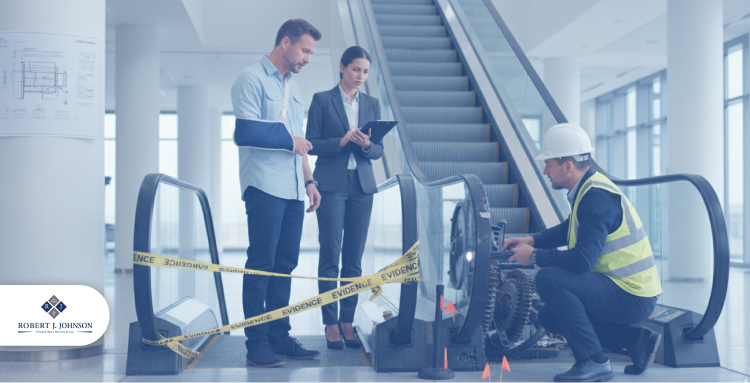
Florida elevator and escalator injuries cases often look straightforward from the outside, yet they have challenges that add weight to the process of proving who is truly responsible. Common challenges victims face:
Multiple parties blaming each other, which slows resolution.
Evidence can disappear or be altered, making it harder to prove negligence.
Mechanical failures are technically complex, requiring expert analysis to show what went wrong.
Comparative negligence allows insurers to argue the victim shares fault, potentially reducing compensation.
Delays in reporting or filing can weaken a case or bar it under Florida’s statute of limitations.
In my experience, the strongest cases are built within days of the accident when the evidence is fresh and the details are still raw. My role is to bring order to that chaos and that’s why I gather inspection records, interview witnesses, and work with safety experts to trace every link of responsibility.
Florida law gives you the right to hold negligent parties accountable, and no one should face that fight alone. If you or someone you care about was injured in an elevator or escalator accident, reach out for a consultation and learn what your next step should be.
